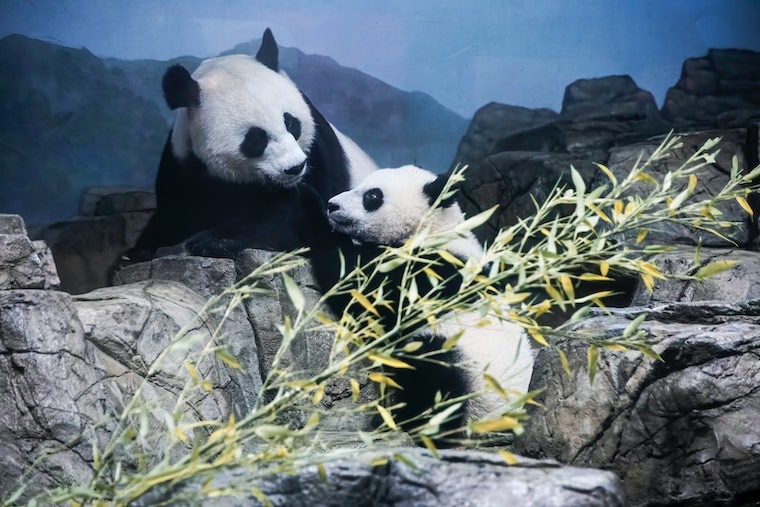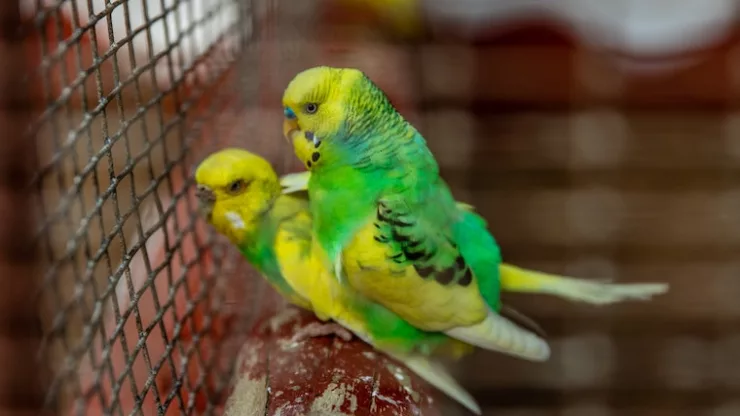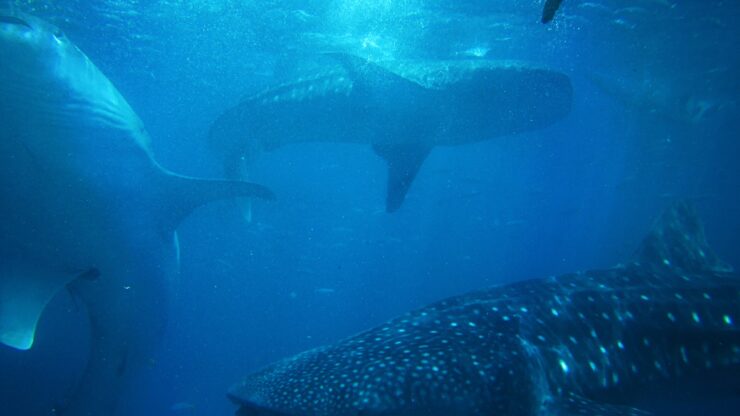Welcome to the fascinating world of giant pandas (Ailuropoda melanoleuca). These elusive creatures, native to the mountainous regions of central China, have captured the hearts of millions with their distinct black-and-white fur and playful demeanor.
In this comprehensive article, we delve into the life and biology of these magnificent animals, their habitat, dietary preferences, and conservation status.
Natural Habitat and Distribution
A Life in the Mountains
Giant pandas thrive in the bamboo forests nestled within the mountainous regions of central China, specifically in the provinces of Sichuan, Shaanxi, and Gansu.
The altitude of their habitat ranges between 4,000 and 12,000 feet above sea level.
The dense undergrowth, along with a damp and cool climate, provides the perfect environment for pandas to feed, breed, and thrive.
Physical Characteristics
The Iconic Fur Pattern
The black-and-white fur of the giant panda serves as both camouflage and a distinctive feature that sets them apart from other bear species.
The black patches around their eyes, ears, and limbs help them blend into the shadows of the bamboo forests while the white areas resemble the light that filters through the canopy.

Size and Anatomy
Giant pandas are medium-sized bears, with adults measuring 4 to 6 feet in length and weighing between 220 and 330 pounds. Males are typically larger than females.
Their strong, heavyset bodies are supported by their short legs and robust bones.
One of their most remarkable features is their elongated wrist bone, known as the pseudothumb, which helps them grip bamboo stalks.
Diet and Eating Habits
Bamboo Specialists
Despite being classified as carnivores, giant pandas have a primarily herbivorous diet, consisting almost exclusively of bamboo.
Bamboo makes up 99% of their diet, and pandas have adapted to this unique dietary preference by developing strong jaw muscles and flat molars for crushing the fibrous plant.
They consume between 26 and 84 pounds of bamboo daily, foraging for the most nutritious parts, such as shoots, leaves, and stems.
Opportunistic Omnivores
Occasionally, pandas may consume other food sources, such as small mammals, birds, and insects, when available.
These instances are rare and usually do not contribute significantly to their overall diet.
Reproduction and Life Cycle
Mating and Gestation
Giant pandas have a short mating season, typically between March and May. Females are only fertile for two to three days during this period.
After mating, the gestation period can range from 95 to 160 days due to a phenomenon called embryonic diapause, where the fertilized egg does not immediately implant into the uterus.

Cubs and Development
Panda cubs are born blind and weigh only around 3.5 ounces. They rely heavily on their mother’s care for warmth, nutrition, and protection.
Cubs begin to open their eyes at around 6 to 8 weeks old, and by 7 months, they start to explore their surroundings and eat bamboo.
At 18 months, they become independent and venture out to establish their own territory.
Conservation Status and Efforts
Vulnerable Species
Giant pandas were once classified as endangered, but due to intensive conservation efforts, their status has improved to “vulnerable” on the IUCN Red List.
However, they still face threats such as habitat loss, fragmentation, and climate change, which impact their ability to find food and mates.
Protection and Recovery
Conservation initiatives have played a crucial role in the recovery of the giant panda population.
China has established over 60 panda reserves, which cover more than 50% of their habitat and protect around 66% of the wild panda population.
Additionally, international collaboration on breeding programs has led to a steady increase in the number of captive pandas.
Reforestation and Habitat Connectivity
Efforts to restore and connect fragmented habitats have been undertaken to provide pandas with the resources they need to survive and reproduce.
Reforestation projects aim to create continuous stretches of bamboo forests, facilitating panda movement and gene flow between isolated populations.

Cultural Significance
Symbol of Peace and Conservation
The giant panda is a symbol of peace in Chinese culture, and their gentle nature has earned them a place in the hearts of people worldwide.
They have also become the face of global conservation efforts, with the World Wildlife Fund (WWF) adopting the panda as its logo in 1961.
Diplomatic Ambassadors
Pandas have been used as diplomatic gifts between China and other nations, a practice known as “panda diplomacy.” This exchange of pandas helps foster goodwill and international cooperation in the realms of conservation and research.
Conclusion
The enchanting world of giant pandas is filled with fascinating discoveries and ongoing conservation efforts.
Their unique characteristics, habitat, and dietary preferences contribute to their allure and cultural significance.
As we strive to protect these gentle giants and their ecosystems, we also learn valuable lessons about the interconnectedness of life on Earth and our responsibility to preserve it.

I am a fun fact enthusiast and creator of Facts On Tap.
I love to share my knowledge and curiosity with readers and inspire them to learn something new every day.
When I’m not writing, I enjoy traveling, reading, and playing trivia games with my friends.





